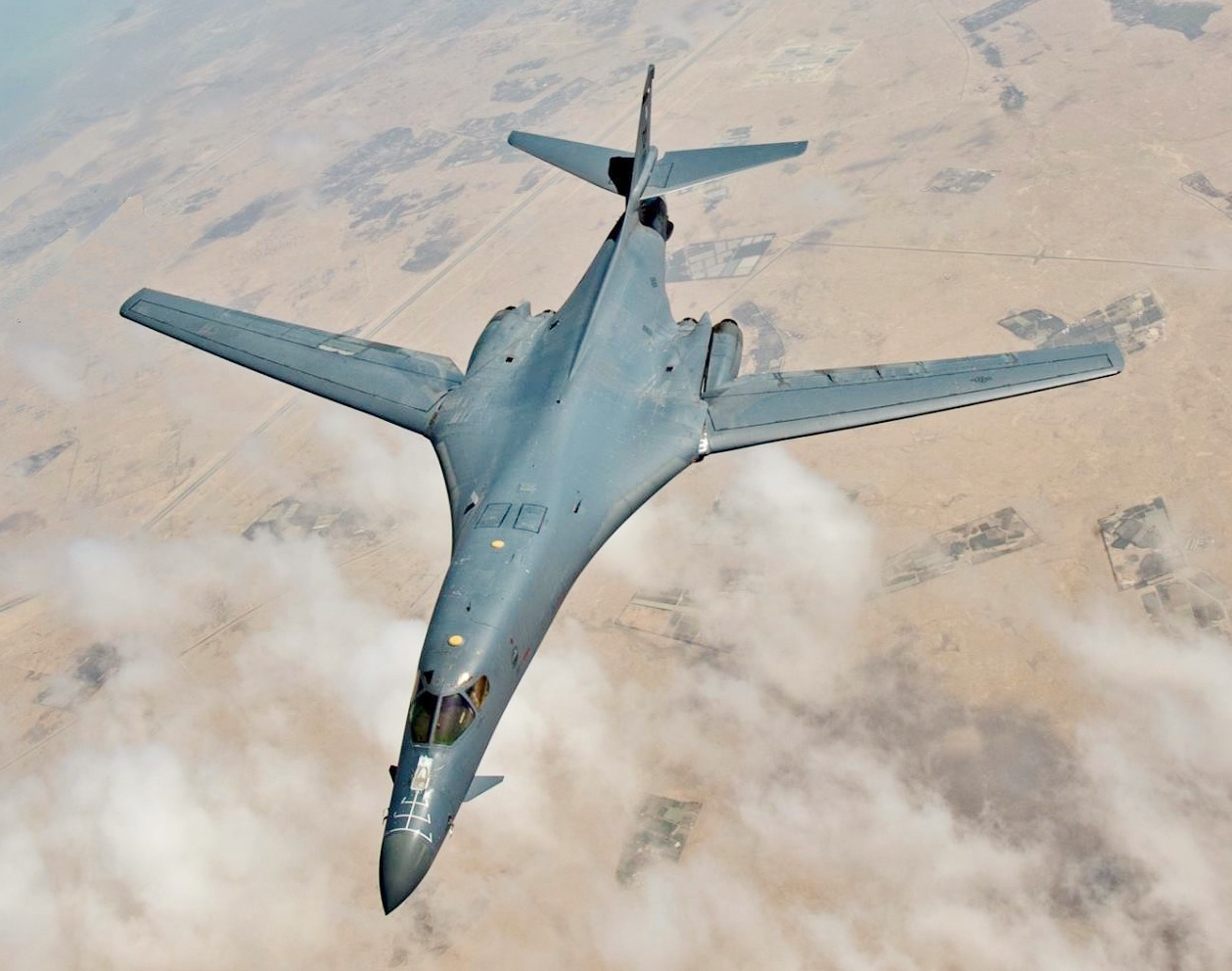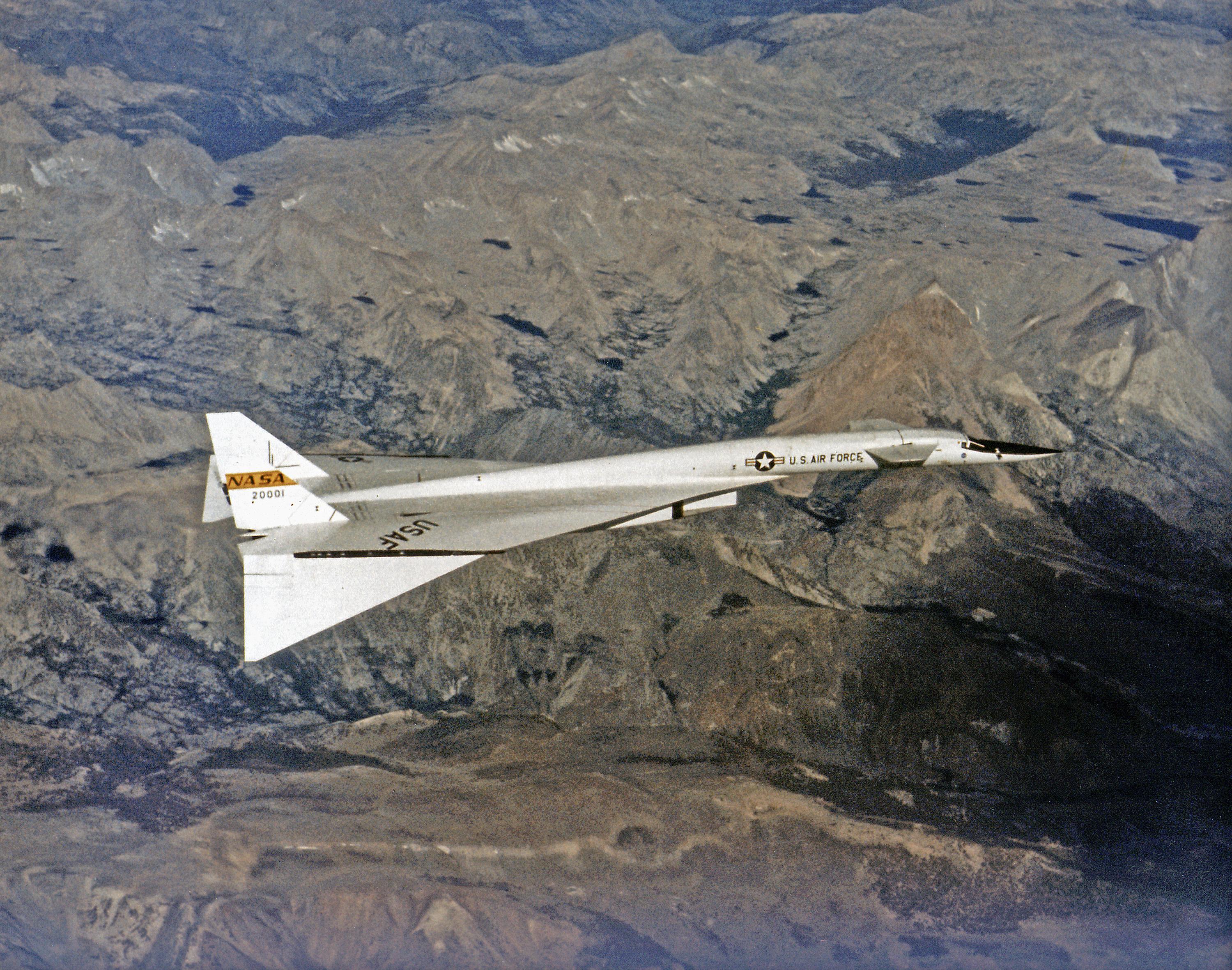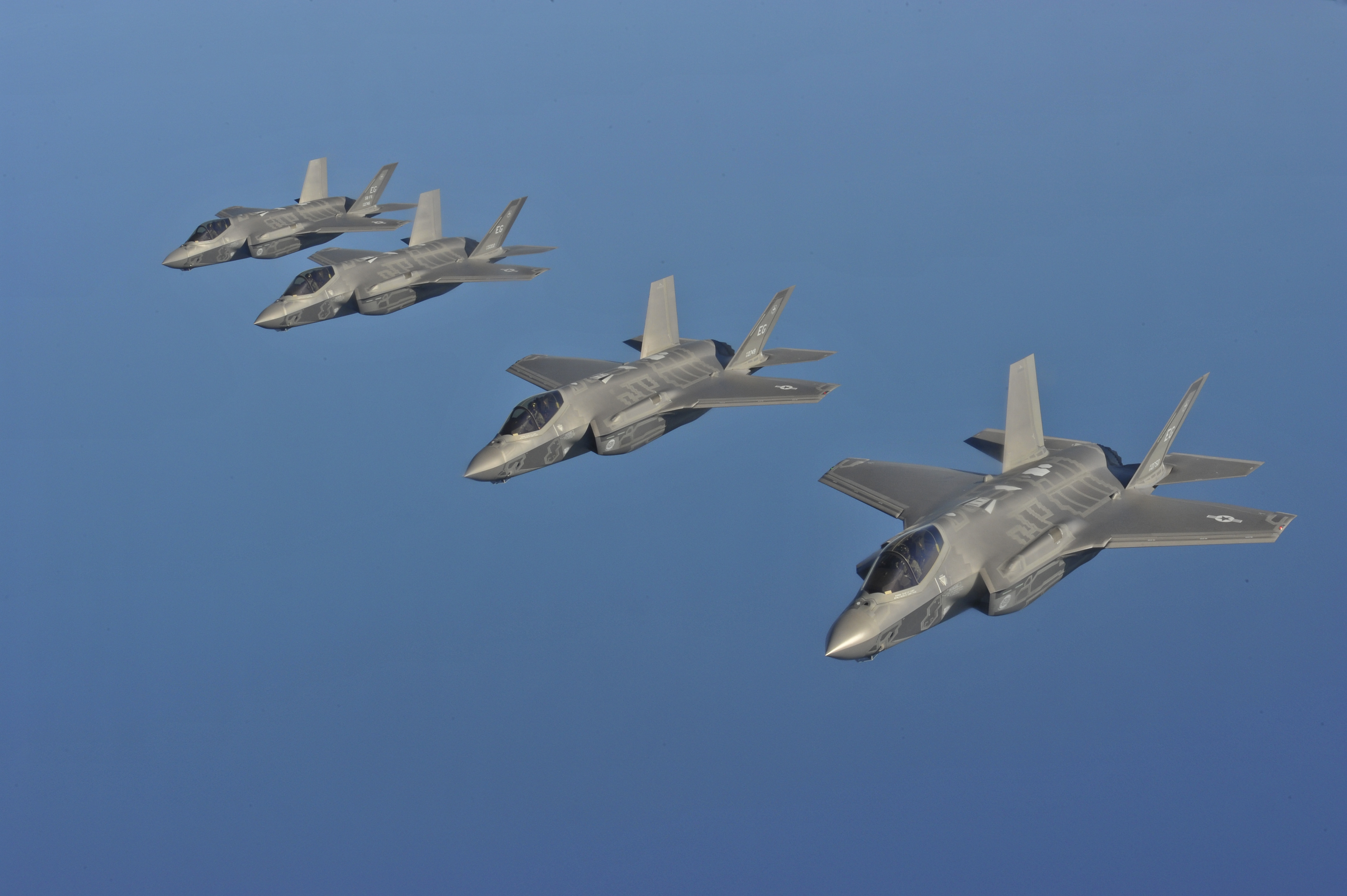|
Strategic Bomber
A strategic bomber is a medium- to long-range Penetrator (aircraft), penetration bomber aircraft designed to drop large amounts of air-to-ground weaponry onto a distant target for the purposes of debilitating the enemy's capacity to wage war. Unlike tactical bombing, tactical bombers, Penetrator (aircraft), penetrators, fighter-bombers, and attack aircraft, which are used in air interdiction operations to attack enemy combatants and military equipment, strategic bombers are designed to fly into enemy territory to destroy strategic targets (e.g., infrastructure, logistics, Military base, military installations, factories, etc.). In addition to strategic bombing, strategic bombers can be used for tactical bombing, tactical missions. There are currently only three countries that operate strategic bombers: the United States, Russia and China. The modern strategic bomber role appeared after Strategic bombing during World War II, strategic bombing was widely employed, and Atomic bombing ... [...More Info...] [...Related Items...] OR: [Wikipedia] [Google] [Baidu] |
B-1B Air Refueling
The Rockwell B-1 Lancer is a supersonic variable-sweep wing, heavy bomber used by the United States Air Force. It is commonly called the "Bone" (from "B-One"). It is one of three strategic bombers serving in the U.S. Air Force fleet along with the B-2 Spirit and the B-52 Stratofortress . The B-1 was first envisioned in the 1960s as a platform that would combine the Mach 2 speed of the B-58 Hustler with the range and payload of the B-52, and was meant to ultimately replace both bombers. After a long series of studies, Rockwell International (now part of Boeing) won the design contest for what emerged as the B-1A. This version had a top speed of Mach 2.2 at high altitude and the ability to fly for long distances at Mach 0.85 at very low altitudes. The combination of the high cost of the aircraft, the introduction of the AGM-86 cruise missile that flew the same basic speed and distance, and early work on the B-2 stealth bomber reduced the need for the B-1. The program was cancel ... [...More Info...] [...Related Items...] OR: [Wikipedia] [Google] [Baidu] |
World War II
World War II or the Second World War, often abbreviated as WWII or WW2, was a world war that lasted from 1939 to 1945. It involved the vast majority of the world's countries—including all of the great powers—forming two opposing military alliances: the Allies and the Axis powers. World War II was a total war that directly involved more than 100 million personnel from more than 30 countries. The major participants in the war threw their entire economic, industrial, and scientific capabilities behind the war effort, blurring the distinction between civilian and military resources. Aircraft played a major role in the conflict, enabling the strategic bombing of population centres and deploying the only two nuclear weapons ever used in war. World War II was by far the deadliest conflict in human history; it resulted in 70 to 85 million fatalities, mostly among civilians. Tens of millions died due to genocides (including the Holocaust), starvation, massa ... [...More Info...] [...Related Items...] OR: [Wikipedia] [Google] [Baidu] |
Multirole Combat Aircraft
A multirole combat aircraft (MRCA) is a combat aircraft intended to perform different roles in combat. These roles can include air to air combat, air support, aerial bombing, reconnaissance, electronic warfare, and suppression of air defenses. Definition The term "multirole" was originally reserved for aircraft designed with the aim of using a common airframe for multiple tasks where the same basic airframe is adapted to a number of differing roles. The main motivation for developing multirole aircraft is cost reduction in using a common airframe. More roles can be added, such as aerial reconnaissance, forward air control, and electronic-warfare aircraft. Attack missions include the subtypes air interdiction, suppression of enemy air defense (SEAD), and close air support (CAS). Multirole has also been applied to one aircraft with both major roles, a primary air-to-air combat role, and a secondary role like air-to-surface attack. However, those designed with an emph ... [...More Info...] [...Related Items...] OR: [Wikipedia] [Google] [Baidu] |
Dassault Rafale
The Dassault Rafale (, literally meaning "gust of wind", and "burst of fire" in a more military sense) is a French twin-engine, canard delta wing, multirole fighter aircraft designed and built by Dassault Aviation. Equipped with a wide range of weapons, the Rafale is intended to perform air supremacy, interdiction, aerial reconnaissance, ground support, in-depth strike, anti-ship strike and nuclear deterrence missions. The Rafale is referred to as an "omnirole" aircraft by Dassault. In the late 1970s, the French Air Force and French Navy were seeking to replace and consolidate their existing fleets of aircraft. In order to reduce development costs and boost prospective sales, France entered into an arrangement with the UK, Germany, Italy and Spain to produce an agile multi-purpose "Future European Fighter Aircraft" (which would become the Eurofighter Typhoon). Subsequent disagreements over workshare and differing requirements led to France's pursuit of its own development ... [...More Info...] [...Related Items...] OR: [Wikipedia] [Google] [Baidu] |
Dassault Mirage 2000N/2000D
The Dassault Mirage 2000N is a variant of the Mirage 2000 designed for nuclear strike. It formed the core of the French air-based strategic nuclear deterrent. The Mirage 2000D is its conventional attack counterpart. Development The Mirage 2000N was designed to French requirements for an aircraft to replace the older Mirage IVP. Dassault received a contract to build two prototypes. The aircraft first flew on 3 February 1986. Seventy four were built up to 1993. The Mirage 2000N is based on the Mirage 2000B two-seat trainer, but features considerable changes. The airframe was strengthened for low-level flight and fitted with an Antilope 5 radar, which is used for terrain following, navigation and ground mapping, and which can follow terrain at . Other avionic features are twin INS units and moving map displays for both the pilot and weapon systems officer. The Mirage 2000N can carry one ASMP medium-range nuclear missile, and can also carry two MATRA Magic AAMs for self-defe ... [...More Info...] [...Related Items...] OR: [Wikipedia] [Google] [Baidu] |
Dassault Mirage IV
The Dassault Mirage IV was a French supersonic strategic bomber and deep- reconnaissance aircraft. Developed by Dassault Aviation, the aircraft entered service with the French Air Force in October 1964. For many years it was a vital part of the nuclear triad of the ''Force de Frappe'', France's nuclear deterrent striking force. The Mirage IV was retired from the nuclear strike role in 1996, and the type was entirely retired from operational service in 2005. During the 1960s, there were plans to export the Mirage IV. In one proposal, Dassault would have entered a partnership with the British Aircraft Corporation to jointly produce a Mirage IV variant for the Royal Air Force and potentially for other export customers, but this project did not come to fruition. The Mirage IV was ultimately not adopted by any other operators. Development Origins During the 1950s, France embarked on an extensive military program to produce nuclear weapons; however, it was acknowledged that ex ... [...More Info...] [...Related Items...] OR: [Wikipedia] [Google] [Baidu] |
France
France (), officially the French Republic ( ), is a country primarily located in Western Europe. It also comprises of overseas regions and territories in the Americas and the Atlantic, Pacific and Indian Oceans. Its metropolitan area extends from the Rhine to the Atlantic Ocean and from the Mediterranean Sea to the English Channel and the North Sea; overseas territories include French Guiana in South America, Saint Pierre and Miquelon in the North Atlantic, the French West Indies, and many islands in Oceania and the Indian Ocean. Due to its several coastal territories, France has the largest exclusive economic zone in the world. France borders Belgium, Luxembourg, Germany, Switzerland, Monaco, Italy, Andorra, and Spain in continental Europe, as well as the Netherlands, Suriname, and Brazil in the Americas via its overseas territories in French Guiana and Saint Martin. Its eighteen integral regions (five of which are overseas) span a combined area of and contain clos ... [...More Info...] [...Related Items...] OR: [Wikipedia] [Google] [Baidu] |
Conventional Weapon
The terms conventional weapons or conventional arms generally refer to weapons whose ability to damage comes from kinetic, incendiary, or explosive energy and exclude weapons of mass destruction (''e.g.'' nuclear, biological, radiological and chemical weapons). Conventional weapons include small arms, defensive shields and light weapons, sea and land mines, as well as bombs, shells, rockets, missiles and cluster munitions. These weapons use explosive material based on chemical energy, as opposed to nuclear energy in nuclear weapons. Conventional weapons are opposed to both "Weapons of Mass Destruction" and "Improvised Weapons". The acceptable use of all types of conventional weapons in war time is governed by the Geneva Conventions. Certain types of conventional weapons are also regulated or prohibited under the United Nations Convention on Certain Conventional Weapons. Others are prohibited under the Convention on Cluster Munitions, the Ottawa Treaty (also known as the Mine B ... [...More Info...] [...Related Items...] OR: [Wikipedia] [Google] [Baidu] |
Heavy Bomber
Heavy bombers are bomber aircraft capable of delivering the largest payload of air-to-ground weaponry (usually bombs) and longest range (takeoff to landing) of their era. Archetypal heavy bombers have therefore usually been among the largest and most powerful military aircraft at any point in time. In the second half of the 20th century, heavy bombers were largely superseded by strategic bombers, which were often smaller in size, but had much longer ranges and were capable of delivering nuclear bombs. Because of advances in aircraft design and engineering — especially in powerplants and aerodynamics — the size of payloads carried by heavy bombers has increased at rates greater than increases in the size of their airframes. The largest bombers of World War I, the four engine aircraft built by the Sikorsky company in the Soviet Union, could carry a payload of up to of bombs. By the middle of World War II even a single-engine fighter-bomber could carry a bomb load, an ... [...More Info...] [...Related Items...] OR: [Wikipedia] [Google] [Baidu] |
Aerial Refueling
Aerial refueling, also referred to as air refueling, in-flight refueling (IFR), air-to-air refueling (AAR), and tanking, is the process of transferring aviation fuel from one aircraft (the tanker) to another (the receiver) while both aircraft are in flight. The two main refueling systems are ''probe-and-drogue'', which is simpler to adapt to existing aircraft, and the ''flying boom'', which offers faster fuel transfer, but requires a dedicated boom operator station. The procedure allows the receiving aircraft to remain airborne longer, extending its range or loiter time. A series of air refuelings can give range limited only by crew fatigue/physical needs and engineering factors such as engine oil consumption. As the receiver aircraft can be topped up with extra fuel in the air, air refueling can allow a takeoff with a greater payload which could be weapons, cargo, or personnel: the maximum takeoff weight is maintained by carrying less fuel and topping up once airborne. Aerial ... [...More Info...] [...Related Items...] OR: [Wikipedia] [Google] [Baidu] |
Strike Fighter
In current military parlance, a strike fighter is a multirole combat aircraft designed to operate both as an attack aircraft and as an air superiority fighter. As a category, it is distinct from fighter-bombers. It is closely related to the concept of Interdictor, interdictor aircraft, but it puts more emphasis on aerial combat capabilities as a multirole combat aircraft. Examples of contemporary American strike fighters are the McDonnell Douglas F-15E Strike Eagle, Boeing F/A-18E/F Super Hornet, and Lockheed Martin F-35 Lightning II. History Beginning in the 1940s, the term "strike fighter" was occasionally used in navies to refer to fighter aircraft capable of performing air strike, air-to-surface strikes, such as the Westland Wyvern, Blackburn Firebrand and Blackburn Firecrest. The term "light weight tactical strike fighter (LWTSF)" was used to describe the aircraft to meet the December 1953 NATO specification NBMR-1. Amongst the designs submitted to the competition were the ... [...More Info...] [...Related Items...] OR: [Wikipedia] [Google] [Baidu] |








